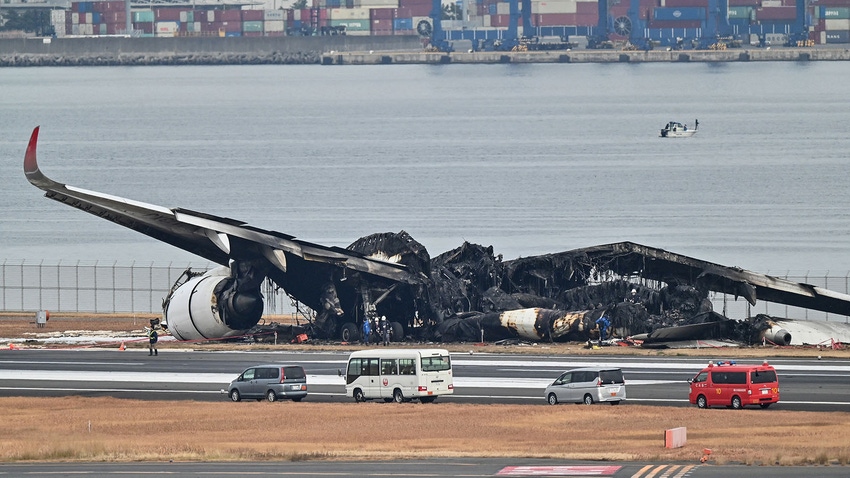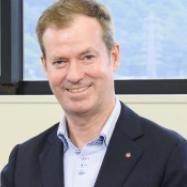Composite Construction Saves Fuel — and Lives — in Japan Airbus 350 Crash
Experts say the carbon-fiber-reinforced composite-intensive structure stood up well to a fire caused by a collision, allowing all 379 passengers and crew to escape via a single emergency ramp.
January 3, 2024

At a Glance
- First serious crash involving an Airbus 350, which was introduced in 2015
- Passenger craft collided with Bombardier Dash-8 maritime patrol plane delivering supplies to quake victims in Niigata
- The Airbus 350 construction consists of up to 54% composites
Intensive use of carbon-fiber-reinforced composites may have contributed to the safe evacuation of all 379 passengers and crew from an Airbus A350-900 passenger jet that collided with a Japan Coast Guard Bombardier Dash-9 maritime patrol plane in Japan. The coast guard plane was reported to have strayed onto the runway while the Airbus was attempting to land at Tokyo’s Haneda Airport. The plane was arriving from New Chitose Airport on the northern island of Hokkaido during Japan’s busy New Year holiday season.
Five members of coast guard crew perish
Tragically, five of the six crew on the coast guard aircraft perished in the flames caused by the collision, but further deaths were avoided despite only one of the emergency slides functioning on the A350. Experts quoted by the BBC indicated that further loss of life may have been averted because of the composite fuselage maintaining structural integrity long enough for passengers and crew to escape from the smoke-filled plane in time.
A350 achieves 25% fuel burn advantage
Introduced in 2015, the Airbus A350 is renowned for its fuel economy, with a 25% fuel burn advantage achieved through extensive use of advanced materials (70% by weight). The fuselage features a four-panel construction with thicker composite sections at the top and bottom where strength is required. The wingbox and wings are also made of composites.

The fuselage of the Airbus A350 features a four-panel design with thick and thin sections. Image courtesy of Airbus.
Overall, up to 54% of the aircraft is composite, complemented by titanium and advanced metallic alloys. The A350’s operating weight empty (OWE) is reportedly 20 tonnes lighter than the current Boeing 777-300ERs that it replaces.
Composite structures environmentally beneficial over time
Airbus says it is worth noting that manufacturing composite materials is energy-intensive and causes a higher environmental impact. However, several studies have shown that composite structures contribute to a 15 to 20% reduction in environmental emissions over time.
About the Author(s)
You May Also Like




